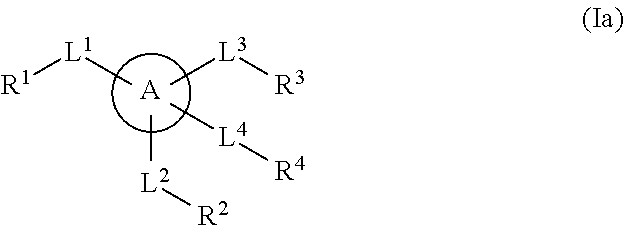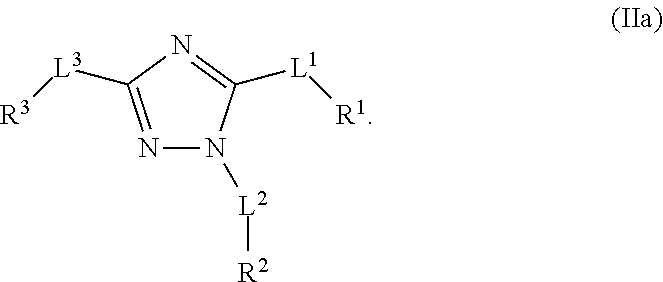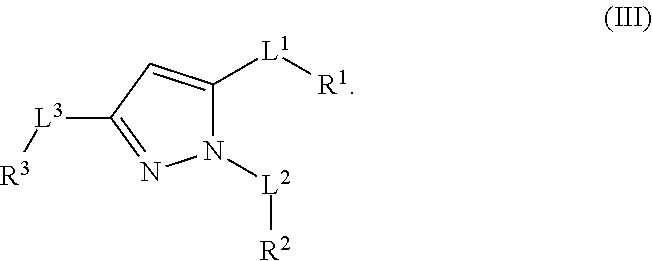Multisubstituted aromatic compounds as serine protease inhibitors
a serine protease inhibitor and multi-substituted aromatic compound technology, applied in the field of compounds, can solve the problems of long half-life (>2 days), unsatisfactory up- or down, bleeding or thrombosis,
- Summary
- Abstract
- Description
- Claims
- Application Information
AI Technical Summary
Benefits of technology
Problems solved by technology
Method used
Image
Examples
example 1
Preparation of Intermediate 1
[0221]The synthesis of Intermediate 1 followed General Procedure 1 following.
[0222]
[0223]To a solution of 2-hydroxynicotinic acid (50.0 g, 0.359 moles, 1.0 eq.) in dichloromethane (500 mL) at 0° C. was added thionyl chloride (133.6 mL, 1.798 moles, 5.0 eq.) dropwise. After 30 min tetrahydrofuran (500 mL) was added and the reaction stirred for 14-15 hours at ambient temperature. The reaction mixture was cooled to 0° C., to it was added methanol (150 mL) dropwise, and the mixture was stirred for a further 30 min at room temperature. The reaction mixture was concentrated under reduced pressure to obtain a solid, which was then neutralized with aqueous sodium bicarbonate (pH 7-8), and again concentrated to obtain solid product. The solid was dissolved in methanol, filtered, and the filtrate concentrated to give desired product 45.0 g, (yield; 81.8%) m / z 153.99 [M+H]+ 1H NMR (DMSO-d6, 400 MHz) δ 8.051-074 (1H, q), 7.661-7.682 (1H, q), 6.259-6.292 (1H, m), 3.7...
example 2
Preparation of Intermediate 2
[0224]The synthesis of Intermediate 2 followed the procedure of General Procedure 2 following.
[0225]
[0226]To a cold (−78° C.) solution of acetonitrile (8.18 mL, 0.156 moles, 1.2 eq.) in tetrahydrofuran (300 mL) was added n-BuLi (2.5M in Hexane; 62.68 mL, 0.156 moles, 1.2 eq) dropwise over a period of 60 min. After addition, the reaction was stirred for another 60 min, then to it added methyl 2-oxo-1,2-dihydropyridine-3-carboxylate (Intermediate 1, 20.0 g, 130 mmol, 1.0 eq) portionwise to reaction mixture and maintained −78° C. for 3 hrs. The reaction was quenched with water and washed with ethyl acetate. The aqueous layer was evaporated to obtain crude product, which was suspended in methanol and stirred for 30 min at room temperature. The solid was filtered through suction and dried over high vacuum to afford Intermediate 2 (11.5 g, 54%).
example 3
Preparation of Compound 1
[0227]The synthesis of Compound 1 followed the procedure of General Procedure 3 following.
[0228]
[0229]To a solution of Intermediate 2 (20.0 g, 0.123 moles, 1.0 eq) in isopropanol (600 mL) and acetic acid (22.2 mL) was added hydrazine monohydrate (7.40 mL, 0.148 moles, 1.2 eq) dropwise and the reaction was heated at 85° C. for 4-5 Hrs. After cooling, the reaction mixture was concentrated to give crude product, which was purified by column chromatography using neutral silica gel (60-120 mesh), eluting with 10-25% methanol in dichloromethane as gradient to give the desired product Compound 1 13.25 g (yield-61%) m / z 177.06 [M+H]+ 1H NMR (DMSO-d6, 400 MHz) δ 11.831 (1H, s), 7.857-7.879 (1H, q), 7.383-7.403 (1H, q), 6.303-6.336 (1H, m), 6.048 (1H, s) 4.633 (2H, s) ppm.
PUM
| Property | Measurement | Unit |
|---|---|---|
| pH | aaaaa | aaaaa |
| pH | aaaaa | aaaaa |
| emission wavelength | aaaaa | aaaaa |
Abstract
Description
Claims
Application Information
 Login to View More
Login to View More - R&D
- Intellectual Property
- Life Sciences
- Materials
- Tech Scout
- Unparalleled Data Quality
- Higher Quality Content
- 60% Fewer Hallucinations
Browse by: Latest US Patents, China's latest patents, Technical Efficacy Thesaurus, Application Domain, Technology Topic, Popular Technical Reports.
© 2025 PatSnap. All rights reserved.Legal|Privacy policy|Modern Slavery Act Transparency Statement|Sitemap|About US| Contact US: help@patsnap.com



